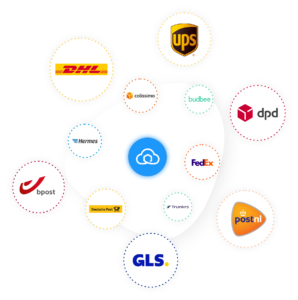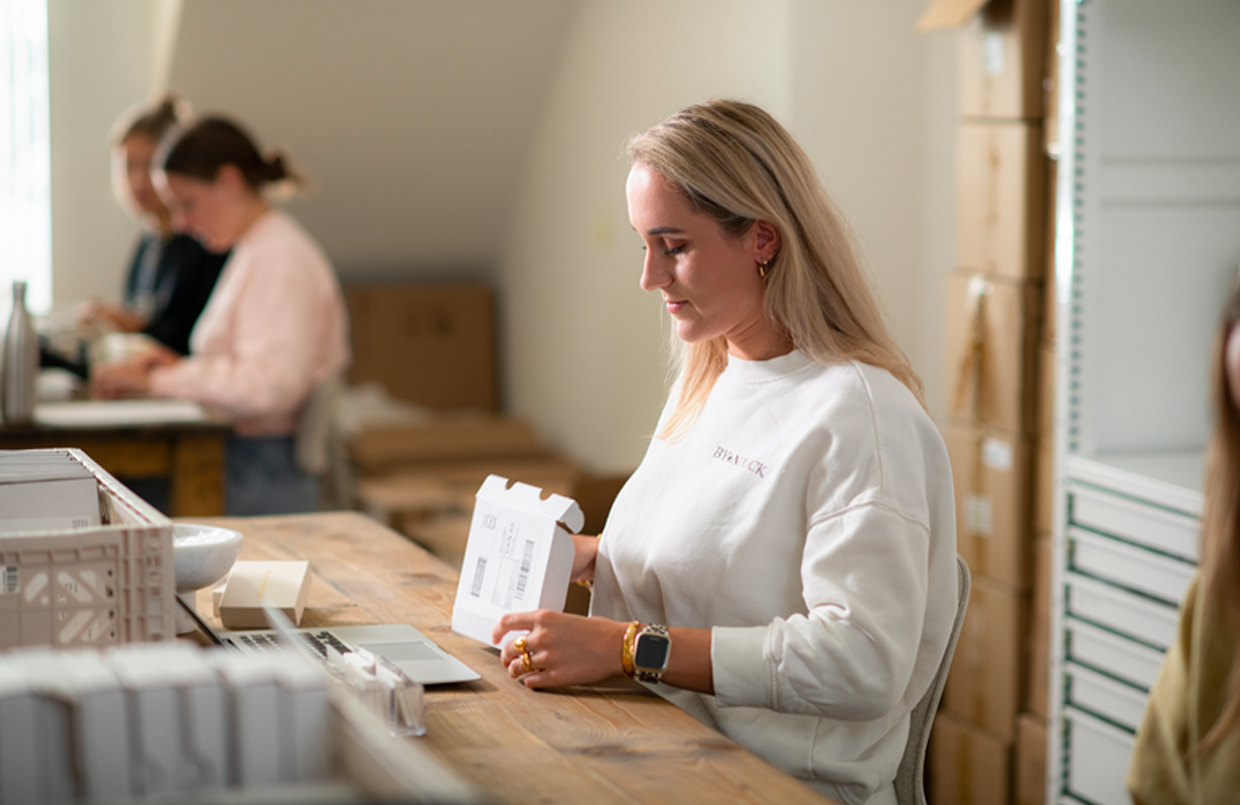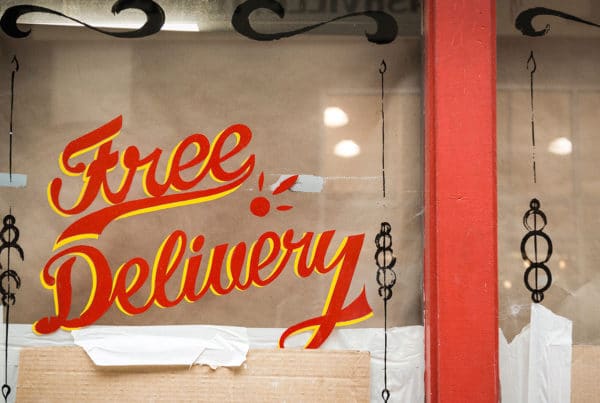Best practices for scaling shipping
Whether you’re entering a new market or starting a new sales channel, scaling up is always a big step in your company’s development. But is your existing logistics infrastructure optimized to support your company’s growth?
To make your scale-up sustainable, you need a cost-effective logistics infrastructure that lets you give your customers what they want.
This article walks you through some of the many logistics and fulfilment challenges you’ll encounter along the way. And we’ll give you plenty of real-life best practices for optimizing your shipping with the right technologies.
What are the main logistics challenges for scaling up your e-retail business?
We’ll tackle the most common challenges you’ll probably encounter along the way—along with some tips for overcoming them.
-
- Challenge #1. Your carriers have too much control over your fulfillment
- Challenge #2. Scaling up to new markets without new integrations
- Challenge #3. Streamlining your logistics processes in a fragmented world
- Challenge #4. Offering different delivery methods during checkout
- Challenge #5. Delivering cross-border orders faster and cheaper
- Challenge #6. Turning cross-border returns into a retention booster
Challenge #1. Your carriers have too much control over your fulfillment
When expanding your business, it’s essential to maintain control and oversight over your shipping invoices to avoid costly mistakes. Here are a few things you can do to take more control over your shipping:
- Cross-check shipping invoices: Errors in shipping invoices are an unnecessary expense that can cost your company a lot of money. To avoid paying too much for your shipping, it’s important to have a solution for cross-checking your invoices and identifying any mismatches between your records and your carrier’s. Using an invoice matching tool is a smart way to avoid overpaying.
- Leverage Track & Trace opportunities: When a shipment is delayed, your customers will start contacting your support department. They might also write negative reviews online that damage your reputation. To avoid this, set up automatic Track & Trace notifications. That way you manage your customers’ expectations while lowering the workload for your support team.
- Optimize costs with analytics: A data-driven approach helps you pick the fastest, cheapest shipping options. This is where your shipping data makes all the difference. With a clear overview of your carrier’s performance, you can make better choices and even negotiate better rates. Look for a data analysis solution that lets you compare shipping times to different locations. You’ll also want to track how many parcels are delivered on time, because this gives you more bargaining power when negotiating rates with carriers. With Sendcloud’s analytics insights these insights are all present in your dashboard or available for a CSV export to combine with other solutions.
Challenge #2. Scaling up to new markets without new integrations
If you are expanding into a new market, that means carefully choosing the right last-mile carriers, or so-called “local heroes.” This is especially important considering that 40% of European online shoppers say they have a strong preference for a specific carrier. But undertaking a separate integration for each new carrier you want to add to your checkout is costly and time-consuming. There’s an easier way:
- Create the right multi-carrier mix: Using a flexible logistics solution like Sendcloud, you can easily add new carriers without having to start from scratch each time. This technology gives you the versatility to offer the popular delivery options that your international customers expect to see.
Using Sendcloud’s integration with Diract Cayenne (WMS), Smartphonehoesjes.nl offers 9 different carriers for domestic and international shipping, handling millions of packages a year.
Challenge #3. Streamlining your logistics processes in a fragmented world
Reducing complexity is a major obstacle for scaling your business. With the right technologies, you can maintain oversight, standardize processes and boost efficiency. Here are few best practices that have helped our clients:
- Standardize tracking updates: Each carrier uses its own tracking updates and there are literally thousands of different status notifications in the logistics world. This is why it’s important to use a solution that helps you simplify all those status notifications into a standard system that’s easy for your company to manage. The Sendcloud API, for example, automatically translates over 6,000 statuses from all different carriers into standardized, easy-to-read messages that are the same for all of them.
- Automate error handling: Automation is one of your most powerful assets when scaling up and it can help you avoid shipping errors too. With the right automation solution, incorrect addresses and other human errors can easily be avoided. Automatically connect your ERP & WMS systems to your logistics operations, so handling orders and shipments can be done error-free. No matter what will be shipped or where it has to be shipped to, the chance of having errors will disappear.
A major mattress retailer implements complex error handling logic with Sendcloud’s solution. The retailer is now making logistics and fulfilment more efficient with 9 carriers from 8 different warehouses.
Challenge #4. Offering different delivery methods during checkout
Besides multiple carriers, you’ll need to offer your international customers the right mix of delivery methods. According to our 2021 E-Commerce Delivery Compass, flexible delivery options are a decisive factor for 71% of European online shoppers when choosing one shop over another. The most popular shipping options are standard home delivery (57%), nominated day delivery (39%), and next-day delivery (35%). Here are a few other points to keep in mind:
- Click & Collect is a cost-saver: If you are operating a multichannel business with both online and offline stores/locations, then adding Click & Collect to your delivery options can be a major cost-saver. It’s increasingly popular too: Nearly one-quarter of European online shoppers say they like to see the option of in-store pickup when shopping online.
- Cater to local preferences: If you’re scaling up across international borders in Europe, remember that shoppers in each European country have clear expectations and preferences when it comes to delivery speed. The majority (58%) of Europeans expect standard delivery to take 2 to 3 days, while the maximum amount of time most (69%) are willing to wait is between 4 and 5 days. To meet local expectations, you can best work with local carriers in each market where you do business.
Athletics retailer Intersport has lowered the shipping costs by 15% simply by adding in-store pickup to the delivery options during checkout. In total, the retailer offers 5 flexible delivery methods using Sendcloud’s shipping solution.
Challenge #5. Delivering cross-border orders quickly, without having warehouses in multiple countries
Getting products to your customers quickly enough is a challenge even if you’re just delivering to one country. If you are scaling up to cross-border business, this becomes even more of a concern. Don’t have the infrastructure to maintain separate warehouses in each country? It’s not the end of the world. Here are some ideas for filling the gap:
- Directly inject parcels to local carrier hubs: We can imagine you don’t want to open up multiple local warehouses when you want to expand into multiple markets. Well, there’s good news. It’s not always necessary to do so. Smarthoesjes.nl saved 10% using a direct injection shipping method via We Grow Webshops. This eliminates the need for local warehouses.
They pre-print local carrier labels via Sendcloud and then inject bulk shipments to different countries. This speeds up the process makes shipments cheaper and enables them to offer local services to your clients.
A leading online florist in the UK has scaled to a new region in just 4 weeks. Sendcloud lets them speed up their injection shipping by giving them the ability to pre-print local carrier labels right in their home warehouse before shipping the orders abroad. In total, they handle 200,000 parcels a month.
Challenge #6. Turning cross-border returns into a retention booster
Smooth returns are essential for maintaining good customer relations. They’re even a key factor in most European shoppers’ purchase decision-making: 85% of European shoppers check the return policy before making a purchase. Get returns right and you’ll be well on your way to cross-border success. Here are a few ideas:
- Automate returns: Manually processing return shipping requests from customers is expensive for your company and frustrating for your customers. As your company grows, you want to lower costs and spend as little effort on shipping as possible. By automating your returns process, you enable your customers to self-service their return shipping. This is more customer-friendly and it saves you money. Using a solution like Sendcloud, you can offer your customers a convenient returns portal where they can print their own return shipping label, based on your returns policy. Then you can automatically keep them updated on the status as their return is processed. It’s a major time saver for your customer support team, and a customer-friendlier solution.
- Offer flexible return options: As with delivery methods, there are strong consumer preferences when it comes to returns. If you want your returns policy to strengthen customer relations and encourage retention, it’s important to offer flexibility. For example, 45% of European online shoppers prefer to return their package to a nearby drop-off point. Giving customers more freedom of choice is always the best approach. And the only way to achieve this is to use a logistics software solution that lets you work with international carriers and shipping labels in multiple countries.
Make your business a success with the help of logistics
Now that you have a better view of some of the main logistical challenges you’ll face, we hope you’ll feel encouraged to turn your e-commerce scale-up into a profitable venture.
Remember that all customers—no matter where they are—basically expect the same things: convenience, a smooth fulfillment experience and plenty of flexibility.
As an e-retail scale-up, you just have to figure out which solutions meet those expectations the best, wherever your company is operating. By choosing the right carriers, delivery methods, return options and logistics technology, you’ll be well on your way to making your company’s scale-up ambitions a reality.



















